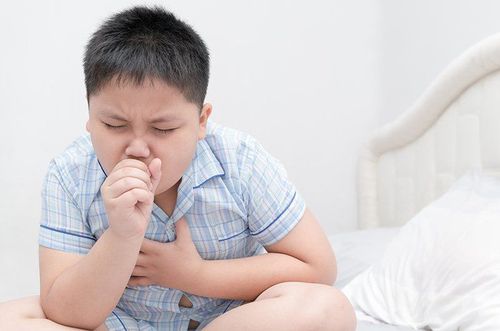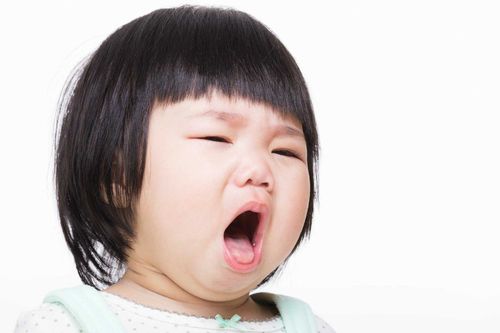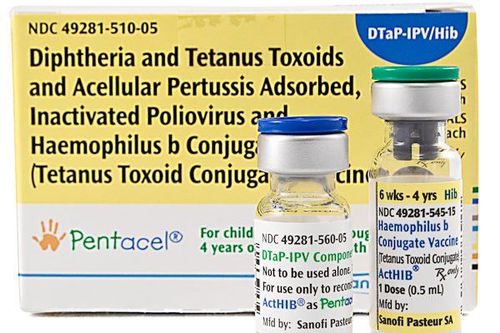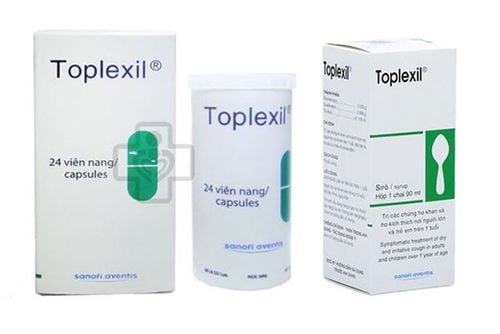This is an automatically translated article.
Whooping cough is a highly contagious disease caused by the bacterium Bordetella pertussis and is transmitted through close personal contact, sneezing, and coughing. Although children get the whooping cough vaccine regularly, there are outbreaks of whooping cough from time to time.
1. Whooping cough in children
Pertussis bacteria usually infect babies 1-2 weeks before symptoms appear. The initial symptoms are similar to those of a cold. For about a week, your child may have a runny nose, sneezing, and occasionally a low-grade fever. The cough develops gradually, starting at night but getting worse during the day. Children may have a cough that makes it difficult for them to breathe. Children may also make a 'cough' sound at the end of a cough when taking a deep breath.
2. Symptoms of Whooping Cough in Toddlers
2.1. Early symptoms of whooping cough Pertussis usually begins with cold or hot symptoms that last 1 or 2 weeks, but in some cases it can last up to 3 weeks. These symptoms may include:
Sneezing Runny nose Mild or occasional mild fever 2.2. Later stage symptoms of pertussis After a week or two, a child with pertussis usually develops and shows some of the more recognizable symptoms of the disease such as:
Coughs that last 20 or 30 seconds non-stop, followed by “coughs” as the child struggles to breathe before the next cough begins. This condition is often worse at night Coughing or vomiting mucus Exhaustion after coughing muscles Lips and fingernails turn blue from lack of oxygen during coughing episodes. It should be noted that pertussis symptoms can vary and be more severe in infants. Besides, whooping cough is a dangerous disease, so parents need to be very attentive and alert whenever their child has any of the symptoms listed above so that they can be detected in time to avoid complications. serious.
3. Progression of pertussis in toddlers
Whooping cough can last up to 10 weeks or even longer, although coughing episodes usually begin to show signs of remission within six weeks of illness. The progression of the disease can be divided into three stages. Stages include:Stage 1: Cold symptoms appear and last for one to two weeks Stage 2: Cough attacks continue for 1 to 6 weeks Stage 3: Gradual recovery phase gradually with coughs coming in less often. This phase usually lasts between 2 and 3 weeks.

Trẻ xuất hiện tình trạng ho kéo dài
Note that pertussis is usually less severe and tends to resolve more quickly in children who have been vaccinated against diphtheria, pertussis, and tetanus.
Whooping cough is very contagious. Children can become infected by direct contact with people who are infected with the bacteria or simply by breathing contaminated air. Pertussis bacteria usually enter through the nose, pharynx, and throat of the baby. People with pertussis are most contagious during the early stages of the illness until about two weeks after coughing episodes begin.
One thing to keep in mind is that pertussis vaccine is not 100% effective, so it is possible for children to get whooping cough even if they have been vaccinated before. However, babies who have been vaccinated against whooping cough are less likely to get sick than those who have not been vaccinated, besides, the symptoms will be milder and the disease will go away sooner. Most children get some vaccine against whooping cough as part of the DTaP shot, along with vaccines against diphtheria and tetanus. Vaccinations start when the child is 2 months old and continue until the child is 4 to 6 years old. Then, when the child has reached 11-12 years of age, he will be given a booster shot of the vaccine against whooping cough.
The child's risk of pertussis will decrease with each injection, so the child's risk will be lowest after the 5th dose, that is, when the child is 4-6 years old. Pertussis cases have decreased significantly after the introduction of the pertussis vaccine in the 1940s, but this number has shown signs of increasing slightly over the past few decades. In 2018, more than 15,000 cases of pertussis were reported in the United States. Most of these infections are in children under 1 year of age.
4. Diagnosis and treatment of whooping cough
To know if your baby has pertussis, doctors can:
Listen to the child's cough Take nasal and throat secretions to determine the existence of pertussis bacteria In case of suspected pertussis the child has pertussis. , the doctor will give the child antibiotics to fight the infection immediately. They won't wait for test results because these can often take a long time and the most important thing is to treat whooping cough as soon as possible.
Antibiotics are particularly effective in reducing the symptoms of the disease if taken early. If given later, antibiotics may not shorten the duration of the illness, but still have the ability to remove bacteria from the baby's secretions, preventing them from potentially infecting others. Other than that, there's nothing parents can do but wait for the cough to subside. Of course, if the cough continues to get worse even with antibiotics, the child's parents need to notify the doctor immediately.
Some infants with whooping cough require hospital treatment because of slow or stopped breathing, even associated pneumonia. Children admitted to the hospital may need oxygen and intravenous fluids to prevent dehydration.
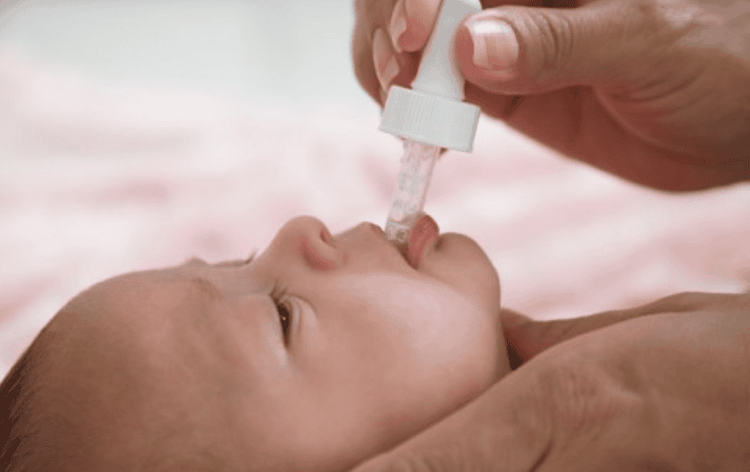
Trẻ cần được sử dụng thuốc theo đúng phác đồ điều trị của bác sĩ
5. Home treatment for whooping cough for toddlers
If a child has been diagnosed with pertussis, there are a few things parents can do to help their child manage whooping cough and stay comfortable:
Adhere to antibiotic treatment as prescribed. doctor's instructions Use a cool-mist humidifier to keep the air in your child's room moist to help them breathe easier. Keep indoor spaces free of irritants such as smoke and dust. Make sure your child has enough water at all times. If your child is eating solid foods, arrange small meals at regular intervals to help prevent vomiting or regurgitation. Do not give your child cough suppressants unless the doctor tells them to. Cough suppressants are not usually used in children under 6 years of age. Coughing is a natural reflex of the body that helps clear mucus caused by pneumonia. By suppressing that response, the child may be hindering the ability of the lung to heal itself.
6. Whooping cough prevention for toddlers
Vaccination is the best way to protect children against whooping cough. Here are the pertussis vaccine recommendations for children by age group:
For children: get the DTaP vaccine on time. For adolescents and adults: Booster DTaP vaccine. The DTaP vaccine can prevent people who receive it from getting pertussis and passing it on to their babies. For pregnant women: Get the DTaP vaccine during each pregnancy, preferably between 27 and 36 weeks of pregnancy Other measures to prevent pertussis in toddlers include:
Antibiotics: If your baby is diagnosed with whooping cough, all close contacts of the child should also be treated with antibiotics Proper hand washing: Scrub hands with soap or hand sanitizer and clean water for at least 20 seconds . Cover your mouth and nose with a tissue when coughing or sneezing. If a tissue is not available, use your upper sleeve or elbow, not your hands. People who have had whooping cough before can still get it again. Because children are still at high risk of getting sick and because the DTaP shot also protects them from diphtheria and tetanus, make sure they get all the necessary vaccines. Whooping cough is a bacterial infection and is highly contagious. The dangerous complications of whooping cough are pneumonia and respiratory infections. Pertussis bacteria also commonly infect the windpipe and cause severe, persistent coughs. The disease's name, "whooping cough" comes from the strange, bird-like sounds babies make when they try to take deep breaths between coughs. In order to prevent and control whooping cough, parents need to ensure that their children are vaccinated with enough vaccines, and need to keep the place of residence as well as personal hygiene for the child properly.

Cha mẹ nên đưa trẻ đến trung tâm tiêm chủng để được tiêm vắc-xin DTaP đúng lịch
Vinmec International General Hospital is currently implementing pertussis vaccination service.
Children will be examined by pediatricians - vaccines, fully screened for physical and health problems, advised on preventive vaccines and injection regimens, how to monitor and care Before vaccination, children are vaccinated according to the latest recommendations of the Ministry of Health & World Health Organization to ensure the best effectiveness and safety for children. A team of experienced and professional pediatric doctors and nurses, understand children's psychology and apply effective pain relief methods for children during the vaccination process. 100% of vaccinated children were monitored for 30 minutes after vaccination and reassessed before leaving. Undertake medical supervision before, during and after vaccination at Vinmec Health System and always have an emergency team ready to coordinate with the vaccination department to handle cases of anaphylaxis, respiratory failure - circulatory arrest, ensuring Ensure timely and correct handling when incidents occur. The vaccination room is airy, with a play area, helping children feel comfortable as if they are walking and have a good mentality before and after vaccination. Vaccines are imported and stored in a modern cold storage system, with a cold chain that meets GSP standards, keeping vaccines in the best conditions to ensure quality. Parents will receive a reminder message before the vaccination date and their child's vaccination information will be synchronized with the National Immunization Information System. In the first years of life, children's resistance and immunity are not yet complete, so they are easy to catch life-threatening infectious diseases: diarrhea, chickenpox, encephalitis, whooping cough, measles, .. .So, schedule your baby's vaccination package at Vinmec so that the child can develop the healthiest and most comprehensive.
Please dial HOTLINE for more information or register for an appointment HERE. Download MyVinmec app to make appointments faster and to manage your bookings easily.
Reference source: babycenter.com; urmc.rochester.edu



